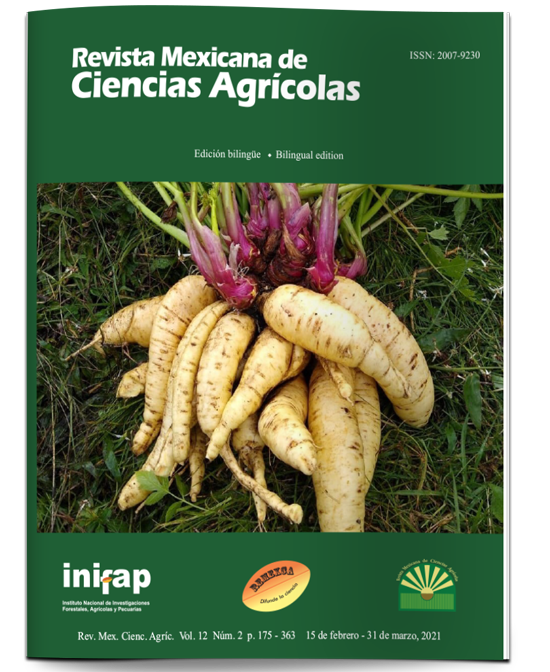Biosorption and tolerance of Pb, Cr and Cd by the biomass of Pleurotus ostreatus (Jacq. Ex Fr.) P. Kumm
DOI:
https://doi.org/10.29312/remexca.v12i2.2687Keywords:
Pleurotus ostreatus, biomass, biosorption, heavy metalsAbstract
Globally, the indiscriminate use of metal products discharged into water used in agriculture has led to severe contamination, therefore it is important to establish a methodology for decontamination through biological processes, with basidiomycete fungi because it has been shown to degrade a number of persistent organic pollutants using extracellular enzymes, in addition to removing dissolved metals from the water by biosorption, acting, as a natural exchanger. The objectives of this work were to determine between three metals (Pb, Cr and Cd) which was most efficiently removed from the aqueous solution by the fungus mycelium of Pleurotus ostreatus, as well as to evaluate its tolerance and describe the effects caused by each on its cellular structure. The adsorption of metals by mycelium in liquid medium was evaluated using modified Kirk medium, the concentrations retained for 8 days in solution of 20 mg L-1 of each element were quantified, the results indicated that the adsorption of Pb (75%) was the most efficient, followed by Cr (42%) Cd (2.25%). In the results in solid culture medium (PDA) no concentration of Pb and Cr inhibited mycelium growth, however, with Cd was inhibited from 60 mg L-1; however, the three elements caused structural alterations in mycelium. In conclusion, the P. ostreatus strain had tolerance and significant biosorption (p≤ 0.05) for Pb and Cr, so it could be a specific bioremediation biomaterial for Pb and Cr.
Downloads
Downloads
Published
How to Cite
Issue
Section
License
The authors who publish in Revista Mexicana de Ciencias Agrícolas accept the following conditions:
In accordance with copyright laws, Revista Mexicana de Ciencias Agrícolas recognizes and respects the authors’ moral right and ownership of property rights which will be transferred to the journal for dissemination in open access. Invariably, all the authors have to sign a letter of transfer of property rights and of originality of the article to Instituto Nacional de Investigaciones Forestales, Agrícolas y Pecuarias (INIFAP) [National Institute of Forestry, Agricultural and Livestock Research]. The author(s) must pay a fee for the reception of articles before proceeding to editorial review.
All the texts published by Revista Mexicana de Ciencias Agrícolas —with no exception— are distributed under a Creative Commons License Attribution-NonCommercial 4.0 International (CC BY-NC 4.0), which allows third parties to use the publication as long as the work’s authorship and its first publication in this journal are mentioned.
The author(s) can enter into independent and additional contractual agreements for the nonexclusive distribution of the version of the article published in Revista Mexicana de Ciencias Agrícolas (for example include it into an institutional repository or publish it in a book) as long as it is clearly and explicitly indicated that the work was published for the first time in Revista Mexicana de Ciencias Agrícolas.
For all the above, the authors shall send the Letter-transfer of Property Rights for the first publication duly filled in and signed by the author(s). This form must be sent as a PDF file to: revista_atm@yahoo.com.mx; cienciasagricola@inifap.gob.mx; remexca2017@gmail.
This work is licensed under a Creative Commons Attribution-Noncommercial 4.0 International license.



